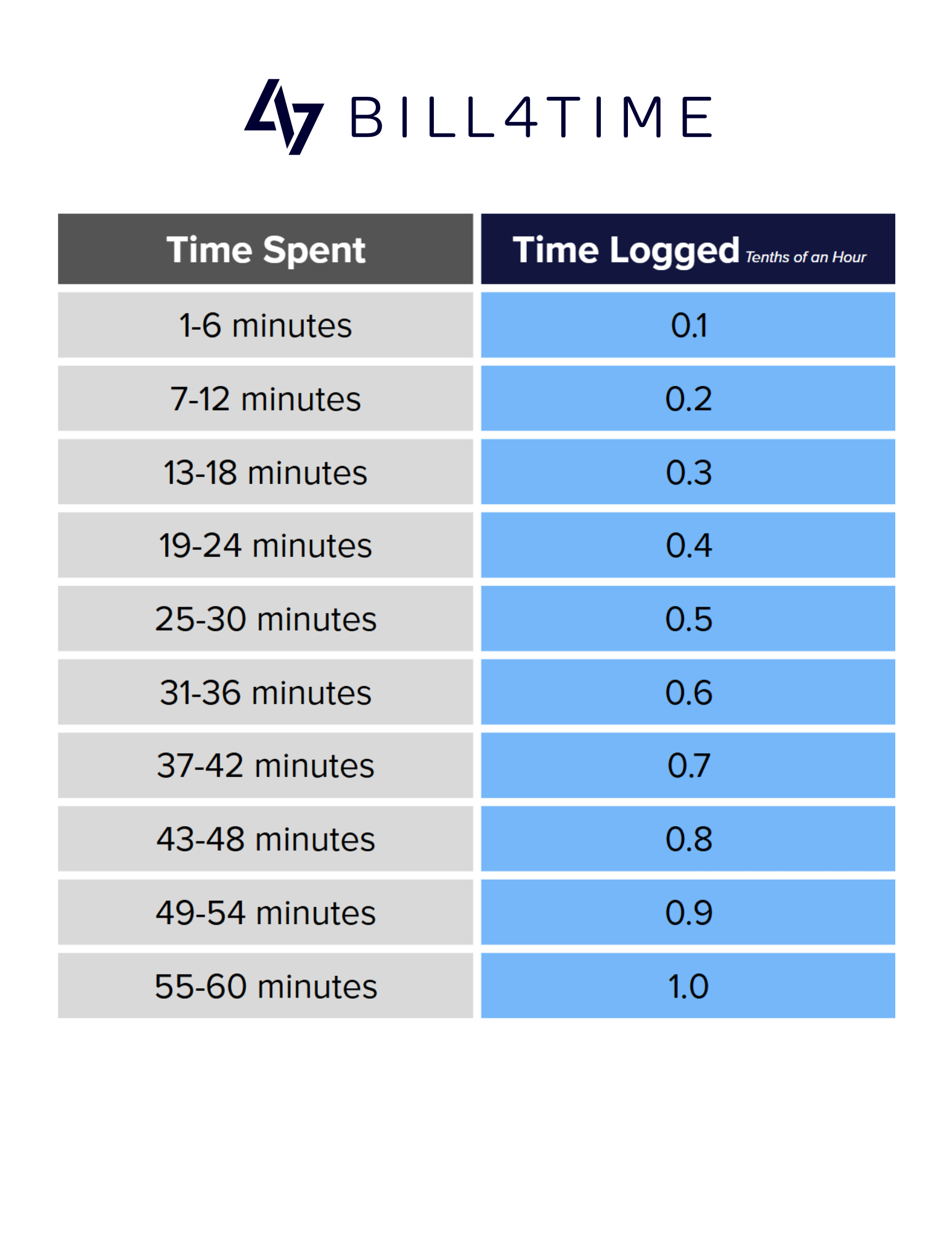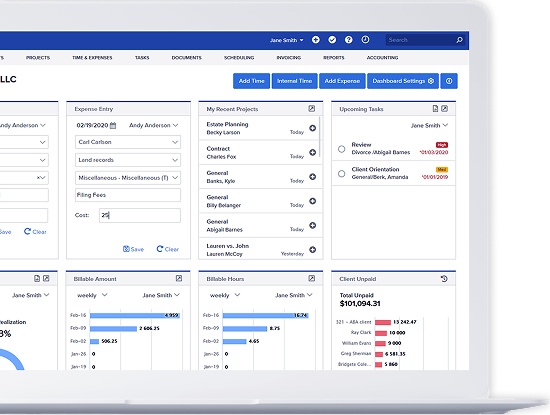
What Counts as Billable Hours for a Law Firm?
09/03/2025 By Clare Sheehan
In general, law firm billable hours encompass all time spent on significant tasks directly related to a client’s case. This includes: research, documentation, client meetings, trial preparation, and more. Although it may seem simple, tracking time is one of the trickiest parts of legal billing. With multiple clients in the mix, time gets miscounted, money gets lost, and if records aren’t accurate, billing can cross into risky territory. How do you simplify this process and reduce your margin of error? Enter: attorney time and billing software. From legal billing software for a solo practitioner to full-scale time and billing platforms for law firms, these systems keep records accurate, easy to manage, and ready for client review—saving time and preventing lost funds. We’ve created this guide to billable hours to give you a clear understanding of how they work, what counts, and how you can manage them more effectively. Let’s get started.
What Are Billable Hours?
In short, billable hours are the time you record for tasks that generate revenue for your firm and value for your client. Law firms often track time in six-minute increments (0.1 hours). That means even a quick task, like reviewing a client email or making a short phone call, gets logged as billable time. Over the course of a day, those small increments add up. The key is whether the task ties back to client work. Drafting a contract? Researching case law? Calling opposing counsel? Those are billable. Sitting in an internal staff meeting or filling out your timesheet? Those fall under non-billable hours. Billable hours also connect to personal performance goals. You might work nine hours a day, but only seven of those are billable once you factor in lunch, admin tasks, or firm-related projects. That gap is normal, but it’s also why hitting your annual billable target takes careful tracking and focus. This is where Bill4Time helps—its built-in time tracking tools make it easy to capture billable minutes as they happen, so you’re not left reconstructing your day later. With accurate logs, you stay on top of your hours, bill confidently, and avoid losing revenue to forgotten tasks.
How Do Lawyers Bill Time?
Billing time in the legal world comes down to tracking and recording the work you do for clients in a structured way. Instead of billing by the exact minute, most firms rely on small billing increments, with the most common being six-minute blocks, also known as 0.1 hours. This system helps standardize time entries and makes invoices easier for both you and your clients to follow. For example, if you respond to an email that takes four minutes, you’ll round it to 0.1 hours. A quick phone call that runs ten minutes would be logged as 0.2 hours. A 6 minute increment chart is often used to make these conversions simple, showing how your tasks map into billable time. A billable hours chart offers a visual way to see how those small increments add up, helping you keep pace with annual goals while also giving your clients transparency. Once you’ve logged the increments, your total hours get multiplied by your hourly rate. This becomes the foundation of the client invoice. Essentially, when billing time, you’re breaking your day into consistent slices, assigning them to the right matters, and turning that data into clear, defensible bills that reflect the real value of your work.
How to Calculate Billable Hours Using a Billable Hours Chart
When you’re billing clients, staying precise matters; using an attorney billing chart that reflects billing in tenths of an hour helps you capture every chargeable moment without overcharging or underbilling. Here’s how that looks in practice, courtesy of a time-tested chart used by court-appointed attorneys:

Staffing your effort into neat, six-minute slices keeps the billing fair and consistent. Jumping between logging seconds or rounding to whole hours just doesn’t match the pace of legal work. Billing in tenths gives you the sweet spot: it’s both accurate and manageable. By using a billable hours chart with billing in tenths, you gain a simple, transparent way to take all your work and turn it into billing entries that you and your clients can trust.
What Are Average Billable Hours for Attorneys?
When you hear people talk about “billable hour requirements,” it can sound like a single fixed number, but in practice, law firm billing averages vary by firm size and client demand. Research from the National Association for Law Placement (NALP) shows that workloads have been creeping upward, especially in larger firms. Law firm billing averages vary widely across the legal profession, and the number you’ll be expected to meet depends on firm size, client demand, and practice area. While firms talk about “billable hour requirements” as if they’re fixed, the reality is more nuanced.
Large Firms: Rising Expectations
Many associates often face pressure not only to meet but to exceed minimum billable hour requirements, especially when aiming for bonuses or promotions. Case in point, Above the Law recently noted that some major firms have instituted daunting targets: for instance, lawyers must log 2,400 “productive” hours, with 2,000 of those billed, the remainder going to business development, recruiting, learning, and other firm initiatives.
Mid-Sized and Smaller Firms: More Stability
In firms with 101–250 attorneys, the average holds steady at around 1,752–1,757 billable hours annually. This relative consistency suggests mid-sized firms may balance client demand with attorney workload more evenly. For attorneys weighing lifestyle considerations, these averages may be more sustainable than the relentless pace of larger firms.
Monthly and Weekly Breakdown
Looking at the numbers in smaller increments helps attorneys plan realistically:
- Large firms: roughly 156 billable hours per month, or 36–39 billable hours per week.
- Smaller firms: about 146 billable hours per month, or 34–36 per week.
Since billable hours exclude internal meetings, professional development, and administrative tasks, the actual workweek often stretches well beyond 40 hours. Many attorneys report working 50–60 hours weekly to hit their billable targets.
Key Takeaway
There is no single “standard” for billable hours—it depends heavily on firm size, structure, and practice area. According to the data, larger firms tend to raise expectations year over year, while smaller firms maintain steadier billing averages. Attorneys should assess not only the raw numbers but also the lifestyle and career implications tied to meeting them.



